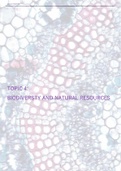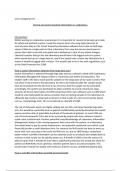Resumen
Summary Study/ revision notes – Topic 4: Biodiversity and natural resources (Biology A-Level Edexcel A Salters-Nuffield)
- Grado
- A-Level Biology
- Institución
- Bachillerato
This document compiles study notes on Topic 4 (Biodiversity and Natural Resources) of the Edexcel A (Salters-Nuffield) A-Level Biology
[Mostrar más]




